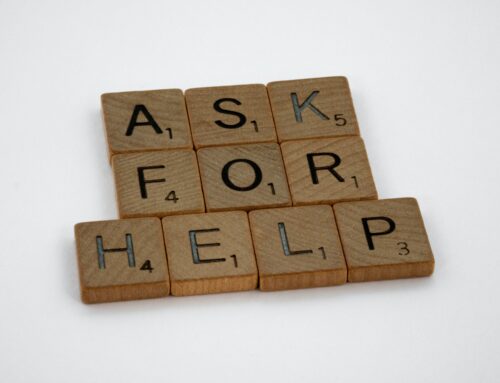August seems a good time of year to talk about heating up, though I’m not talking about the weather. I’m talking about getting emotionally hot, bothered, overwhelmed, or in some other way experiencing the emotional red-zone. When we experience too much heat physically, like when the weather is really hot, we seek ways to cool down: shade, air conditioning, a cold drink, a dip in a pool or lake. All great ways to cool down our body. What about when our emotional temperature is too hot? It is equally important to find ways to cool our emotions down.
Calming down is often my first recommendation for handling relationship conflicts and for managing personal stress, anxiety, or other emotional, social or mental challenges. Practicing ways to calm ourselves is helpful to our general physical and mental health and well-being….and others usually appreciate it too!
When our emotions are “hot”, our nervous system is in the “fight-flight-freeze” respond to danger zone. In this state, our “sympathetic nervous system” has taken over to prepare our body for quick reactions to save our life; rapid shallow breathing, tense muscles, rapid heart rate. To calm down, we want to help our body (and our mind as well!) understand that we are not in a life or death situation that requires such a dramatic response. Our body can go back to its relaxed state. We want to return to the functions of the “parasympathetic nervous system” that is responsible for resting functions such as salivation and digestion, with slow breathing and heart rate.
The following are some tips for how to help your body and mind return to its resting state when something stressful has triggered your fight-flight-freeze response. Once you calm down, you will be in a better state to be able to handle whatever situation provoked the “hot” reaction.
There are three relatively quick physical ways to activate the parasympathetic nervous system.
- Slow down your breathing
- Relax your muscles
- Cool water–drink it or splash it on your face
Each of these options creates an opposing physiological process to the fight-flight process. Slow down your breathing by counting in breathes through your nose slowly and trying to get your lungs filled with air to the lowest reaches of your lungs, down by your abdomen. Then exhale through your mouth again counting slowly. Repeat several times. Try closing your eyes to block out extra stimulation and breathe some more.
Tighten and release muscle groups; especially those you are noticing are particularly tense (forehead, jaw, chest, arms, fists, shoulders, etc.) Pick an area and tense the muscles tightly and then notice upon release that muscle tension is exiting your body. Imagine the tension dissipating.
As for the cool water, think of it as literally cooling you down. A cold drink may just cool down body and mind, as well as provide a bit of hydration, which can’t hurt. Taking the time to take the drink also is giving you something to do that slows you down from having other, perhaps not so great reactions, when emotionally “hot”. So, you’ll not be doing or saying something that you’ll regret later. Same goes for splashing cool water on your face. You need to break from whatever environment you were in to go to a place with a sink and some water and the feeling of the water may just provide enough physical and mental shift in your “climate” to take it down a notch or two.
Consider involving your other senses to calm down as well:
- Listen to peaceful sounds such as water running, music, nature sounds
- Smell fresh air, flowers, candles, lotions, or other aromatherapy
- Look at calm and beautiful scenery out your window or in an image/photo
- Taste something soothing (without overindulging!) remember about activating saliva and digestion? herbal tea, gum, juicy fruit
- Touch something comforting like a hug or massage, a pet, a soft blanket. Or massage lotion into your skin or run a brush through your hair
Give yourself at least 20-30 minutes to calm your body down sufficiently that your parasympathetic nervous system has been able to resume resting state functions. Once you have calmed down to at least that degree, you will be able to engage the slower, thinking and planning parts of your brain to consider reasonable reactions and solutions to the stressful trigger. At this point, you can more successfully engage your thoughts productively.
Still not quite “cool” enough? Take some more time and add some other soothing and supportive options. Consider imagining a peaceful, relaxing place. Actually close your eyes and walk yourself in your imagination through the place, engaging all of your senses in how the place looks, feels, smells, and sounds. Take that mental holiday in that place. Consider talking to a friend or supportive family member. Write or read or do some other enjoyable activity. Play some music…sing….dance….play. You are likely to be in a somewhat different place after some of these activities than you were before.
Once you are a bit calmer, you will be in a better place to consider less negative, catastrophic, or otherwise “hot” alarmist thinking. Soothe yourself with thoughts that are “cooler” too. Remind yourself of your strengths, about times in the past when you have managed other stressful/difficult times and/or people and survived to tell about it! Remind yourself that uncomfortable feelings and situations will at some point change or pass and that you will ultimately be alright. Focus on what is within your personal control, like deciding to get a drink of cool water when you are hot. You can choose what to think and what to do about the “heat” you’re experiencing.
Next time you are getting “hot”, go ahead and try out some of these methods for “cooling down”. See which ones work best for you. We can’t control the weather, but we can help our mind and body cool down.




